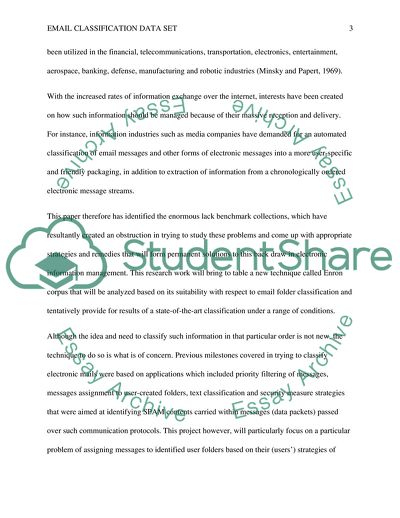Cite this document
(Email Classification Data Set Intelligent System Assignment Example | Topics and Well Written Essays - 2000 words, n.d.)
Email Classification Data Set Intelligent System Assignment Example | Topics and Well Written Essays - 2000 words. https://studentshare.org/information-technology/1793423-intelligent-systemsoftware-engineering-degree
Email Classification Data Set Intelligent System Assignment Example | Topics and Well Written Essays - 2000 words. https://studentshare.org/information-technology/1793423-intelligent-systemsoftware-engineering-degree
(Email Classification Data Set Intelligent System Assignment Example | Topics and Well Written Essays - 2000 Words)
Email Classification Data Set Intelligent System Assignment Example | Topics and Well Written Essays - 2000 Words. https://studentshare.org/information-technology/1793423-intelligent-systemsoftware-engineering-degree.
Email Classification Data Set Intelligent System Assignment Example | Topics and Well Written Essays - 2000 Words. https://studentshare.org/information-technology/1793423-intelligent-systemsoftware-engineering-degree.
“Email Classification Data Set Intelligent System Assignment Example | Topics and Well Written Essays - 2000 Words”. https://studentshare.org/information-technology/1793423-intelligent-systemsoftware-engineering-degree.


